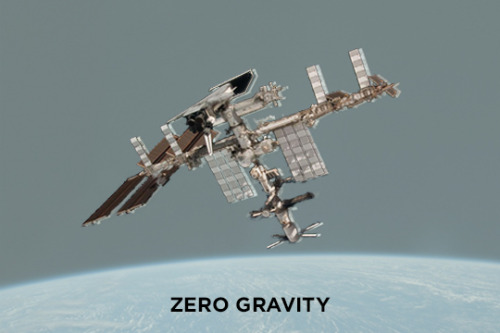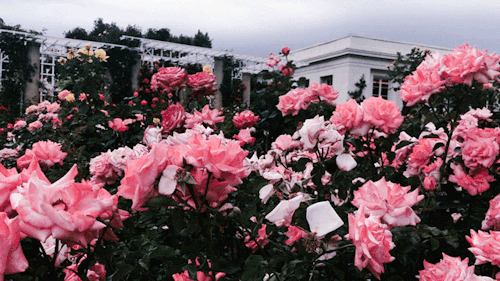Smparticle2 - Untitled



More Posts from Smparticle2 and Others



Building microfluidic circuits is generally a multi-day process, requiring a clean room and specialized manufacturing equipment. A new study suggests a quicker alternative using fluid walls to define the circuit instead of solid ones. The authors refer to their technique as “Freestyle Fluidics”. As seen above, the shape of the circuit is printed in the operating fluid, then covered by a layer of immiscible, transparent fluid. This outer layer help prevent evaporation. Underneath, the circuit holds its shape due to interfacial forces pinning it in place. Those same forces can be used to passively drive flow in the circuit, as shown in the lower animation, where fluid is pumped from one droplet to the other by pressure differences due to curvature. Changing the width of connecting channels can also direct flow in the circuits. This technique offers better biocompatibility than conventional microfluidic circuits, and the authors hope that this, along with simplified manufacturing, will help the technique spread. (Image and research credit: E. Walsh et al., source)

“There weren’t many opportunities to work in Paraguay. I was selling tools on the street. There was no money. There was nothing. I came to Argentina when I was nineteen and life has been so much better. I work every day. I’m close to opening another shop just like this. I do get called a lot of names like ‘Shitty Paraguayan.’ But I’m used to it now. In the beginning I would try to fight back, but not anymore. When I first arrived, I fought a man who tried to stab me through the cage. But he came back with twenty people and destroyed my store. So I don’t fight back anymore. Everyone in the neighborhood knows me now, so I’m treated with more respect. And my son was born in this country. So this one is an Argentinian. He’s going to study.” (Buenos Aires, Argentina)


SoCal, home.


David Silverman @tubatron
1st appearance of Milhouse in 1st Butterfinger storyboard 11/18/1988 (missed the anni thing by a few weeks – )

(Image caption: A new technique called magnified analysis of proteome (MAP), developed at MIT, allows researchers to peer at molecules within cells or take a wider view of the long-range connections between neurons. Credit: Courtesy of the researchers)
Imaging the brain at multiple size scales
MIT researchers have developed a new technique for imaging brain tissue at multiple scales, allowing them to peer at molecules within cells or take a wider view of the long-range connections between neurons.
This technique, known as magnified analysis of proteome (MAP), should help scientists in their ongoing efforts to chart the connectivity and functions of neurons in the human brain, says Kwanghun Chung, the Samuel A. Goldblith Assistant Professor in the Departments of Chemical Engineering and Brain and Cognitive Sciences, and a member of MIT’s Institute for Medical Engineering and Science (IMES) and Picower Institute for Learning and Memory.
“We use a chemical process to make the whole brain size-adjustable, while preserving pretty much everything. We preserve the proteome (the collection of proteins found in a biological sample), we preserve nanoscopic details, and we also preserve brain-wide connectivity,” says Chung, the senior author of a paper describing the method in the July 25 issue of Nature Biotechnology.
The researchers also showed that the technique is applicable to other organs such as the heart, lungs, liver, and kidneys.
The paper’s lead authors are postdoc Taeyun Ku, graduate student Justin Swaney, and visiting scholar Jeong-Yoon Park.
Multiscale imaging
The new MAP technique builds on a tissue transformation method known as CLARITY, which Chung developed as a postdoc at Stanford University. CLARITY preserves cells and molecules in brain tissue and makes them transparent so the molecules inside the cell can be imaged in 3-D. In the new study, Chung sought a way to image the brain at multiple scales, within the same tissue sample.
“There is no effective technology that allows you to obtain this multilevel detail, from brain region connectivity all the way down to subcellular details, plus molecular information,” he says.
To achieve that, the researchers developed a method to reversibly expand tissue samples in a way that preserves nearly all of the proteins within the cells. Those proteins can then be labeled with fluorescent molecules and imaged.
The technique relies on flooding the brain tissue with acrylamide polymers, which can form a dense gel. In this case, the gel is 10 times denser than the one used for the CLARITY technique, which gives the sample much more stability. This stability allows the researchers to denature and dissociate the proteins inside the cells without destroying the structural integrity of the tissue sample.
Before denaturing the proteins, the researchers attach them to the gel using formaldehyde, as Chung did in the CLARITY method. Once the proteins are attached and denatured, the gel expands the tissue sample to four or five times its original size.
“It is reversible and you can do it many times,” Chung says. “You can then use off-the-shelf molecular markers like antibodies to label and visualize the distribution of all these preserved biomolecules.”
There are hundreds of thousands of commercially available antibodies that can be used to fluorescently tag specific proteins. In this study, the researchers imaged neuronal structures such as axons and synapses by labeling proteins found in those structures, and they also labeled proteins that allow them to distinguish neurons from glial cells.
“We can use these antibodies to visualize any target structures or molecules,” Chung says. “We can visualize different neuron types and their projections to see their connectivity. We can also visualize signaling molecules or functionally important proteins.”
High resolution
Once the tissue is expanded, the researchers can use any of several common microscopes to obtain images with a resolution as high as 60 nanometers — much better than the usual 200 to 250-nanometer limit of light microscopes, which are constrained by the wavelength of visible light. The researchers also demonstrated that this approach works with relatively large tissue samples, up to 2 millimeters thick.
“This is, as far as I know, the first demonstration of super-resolution proteomic imaging of millimeter-scale samples,” Chung says.
“This is an exciting advance for brain mapping, a technique that reveals the molecular and connectional architecture of the brain with unprecedented detail,” says Sebastian Seung, a professor of computer science at the Princeton Neuroscience Institute, who was not involved in the research.
Currently, efforts to map the connections of the human brain rely on electron microscopy, but Chung and colleagues demonstrated that the higher-resolution MAP imaging technique can trace those connections more accurately.
Chung’s lab is now working on speeding up the imaging and the image processing, which is challenging because there is so much data generated from imaging the expanded tissue samples.
“It’s already easier than other techniques because the process is really simple and you can use off-the-shelf molecular markers, but we are trying to make it even simpler,” Chung says.
Behind a TED-Ed Lesson: Animation + Inspiration
To celebrate George Seurat’s birthday today, we thought we’d do a deep dive behind the scenes of one of our animated lessons, How do schools of fish swim in harmony?, which is about the concept of ‘emergence’ and whose animated style just so happens to have been largely influenced by the paintings of George Seurat and his contemporaries.

Emergence refers to the spontaneous creation of sophisticated behaviors and functions from large groups of simple elements, and can be used to explain the movements of ants, fish, and birds, as well as how the tiny cells in your brain give rise to the complex thoughts, memories, and consciousness that are you.

A Sunday Afternoon on the Island of La Grande Jatte, George Seurat (1884–86)
It’s kind of like a pointillist painting. When you zoom in real close, it’s just a collection of chaotic brush strokes. But take a few steps back, and you’ll see that all of those brush strokes are working together to illustrate a complex and detailed scene.

Pointillism stems from Impressionism, and depending on the artist’s technique, the size of the brush strokes vary, but are always visible. For example, Vincent van Gogh’s The Starry Night uses larger brush strokes in the night sky. Both the above and below concept designs show the animator of this lesson testing out how different brushstrokes interact to create depth within a scene. She decided that the swirling waters would make sense as large brushstrokes, which also offered contrast to allow the small fish to stand out.

George Seurat also employed a technique called ‘divisionism’, sometimes known as ‘chromoluminarism’, in which colors were separated into individual dots or patches which interacted optically. So, rather than relying on mixing colors, painters like Seurat and Paul Signac juxtaposed contrasting colors to allow for optical mixing - which in theory would produce more vibrant and pure colors than the traditional process of mixing pigments.

Circus Sideshow (Parade de Cirque), George Seurat (1887–88)
While designing this TED-Ed lesson, George Seurat and Paul Signac’s paintings provided inspiration not just for the brushstroke technique, but also for the color palette.

This GIF of the brain and it’s neural connections draws many of its colors from Seurat’s circus series palette, while the brighter colors - such as the ones used in the title GIF above - are drawn from the more vibrant colors commonly used by Paul Signac, like in the painting below.

Notre-Dame-de-la-Garde (La Bonne-Mère), Marseilles, Paul Signac (1905-06)

Animating this lesson was an opportunity to renew a sense of wonder in our ever complex universe, whether studying it up close or from afar. We hope that watching it might do the same for you!
From the TED-Ed Lesson How do schools of fish swim in harmony? - Nathan S. Jacobs
Animation by TED-Ed // Lisa LaBracio




Astronaut Scott Kelly has spent more time in space than any other American. He has also played solo ping pong with a ball of water and two hydrophobic paddles. Scott Kelly is an American hero.
Image Credit: NASA
-
 flowerthatbloomedinadversity reblogged this · 3 years ago
flowerthatbloomedinadversity reblogged this · 3 years ago -
 phoenixlionme reblogged this · 4 years ago
phoenixlionme reblogged this · 4 years ago -
 balu8 liked this · 6 years ago
balu8 liked this · 6 years ago -
 sleepingfancies liked this · 6 years ago
sleepingfancies liked this · 6 years ago -
 cantfightfatetoo reblogged this · 6 years ago
cantfightfatetoo reblogged this · 6 years ago -
 cantfightfatetoo liked this · 6 years ago
cantfightfatetoo liked this · 6 years ago -
 kopfkinoes reblogged this · 6 years ago
kopfkinoes reblogged this · 6 years ago -
 edwinas reblogged this · 6 years ago
edwinas reblogged this · 6 years ago -
 flowerthatbloomedinadversity reblogged this · 6 years ago
flowerthatbloomedinadversity reblogged this · 6 years ago -
 rainbowglitterandpixiedust reblogged this · 6 years ago
rainbowglitterandpixiedust reblogged this · 6 years ago -
 rainbowglitterandpixiedust liked this · 6 years ago
rainbowglitterandpixiedust liked this · 6 years ago -
 howthebuttsbox reblogged this · 7 years ago
howthebuttsbox reblogged this · 7 years ago -
 lorealnight13 reblogged this · 7 years ago
lorealnight13 reblogged this · 7 years ago -
 that-weirdogirl liked this · 7 years ago
that-weirdogirl liked this · 7 years ago -
 goldblueshiyu reblogged this · 7 years ago
goldblueshiyu reblogged this · 7 years ago -
 xeldablade reblogged this · 7 years ago
xeldablade reblogged this · 7 years ago -
 lordtromedlov reblogged this · 7 years ago
lordtromedlov reblogged this · 7 years ago -
 aurora-sapientia15 liked this · 7 years ago
aurora-sapientia15 liked this · 7 years ago -
 emptsblog reblogged this · 7 years ago
emptsblog reblogged this · 7 years ago -
 emptsblog liked this · 7 years ago
emptsblog liked this · 7 years ago -
 sleebymutual liked this · 7 years ago
sleebymutual liked this · 7 years ago -
 nakioye liked this · 7 years ago
nakioye liked this · 7 years ago -
 comet-darner liked this · 7 years ago
comet-darner liked this · 7 years ago -
 fantasticalfan reblogged this · 7 years ago
fantasticalfan reblogged this · 7 years ago -
 cheshirerabit reblogged this · 7 years ago
cheshirerabit reblogged this · 7 years ago -
 cheshirerabit liked this · 7 years ago
cheshirerabit liked this · 7 years ago -
 lilhuntyqueen reblogged this · 7 years ago
lilhuntyqueen reblogged this · 7 years ago -
 decomposing-rey liked this · 7 years ago
decomposing-rey liked this · 7 years ago -
 yukirayu liked this · 7 years ago
yukirayu liked this · 7 years ago -
 maximaaelia liked this · 7 years ago
maximaaelia liked this · 7 years ago -
 otakuconvention liked this · 7 years ago
otakuconvention liked this · 7 years ago -
 yuujinchos-remade-blog reblogged this · 7 years ago
yuujinchos-remade-blog reblogged this · 7 years ago -
 origamistegosaurus liked this · 7 years ago
origamistegosaurus liked this · 7 years ago -
 andthedressyourhusbandhates reblogged this · 7 years ago
andthedressyourhusbandhates reblogged this · 7 years ago -
 aia-xcv reblogged this · 7 years ago
aia-xcv reblogged this · 7 years ago -
 aia-xcv liked this · 7 years ago
aia-xcv liked this · 7 years ago


